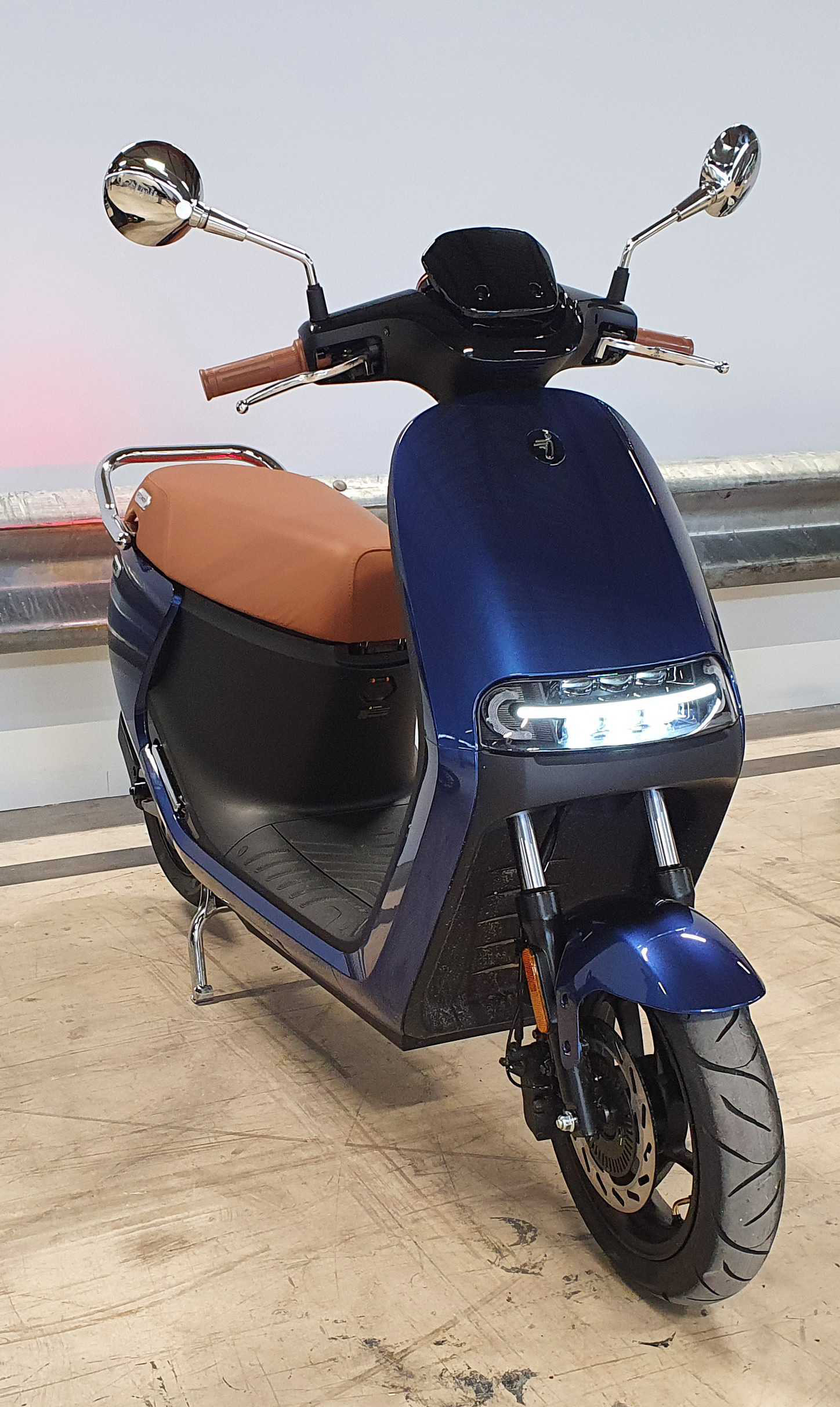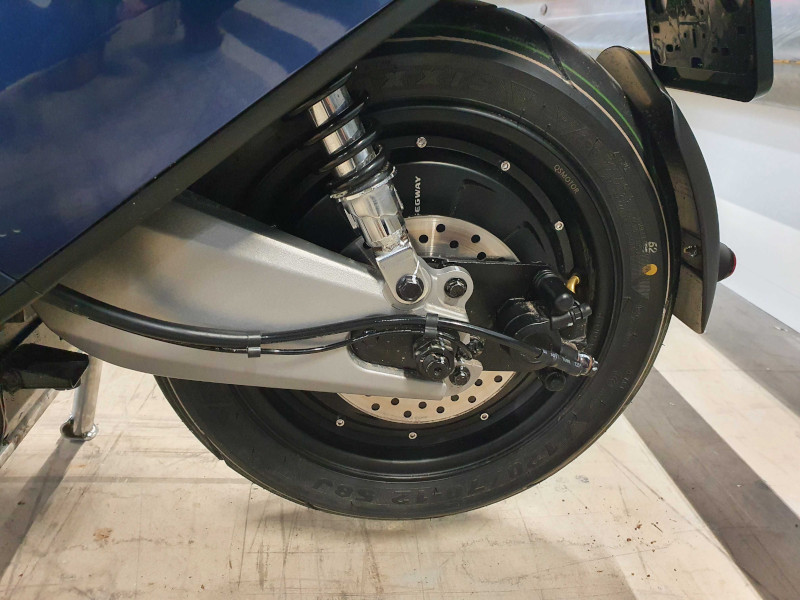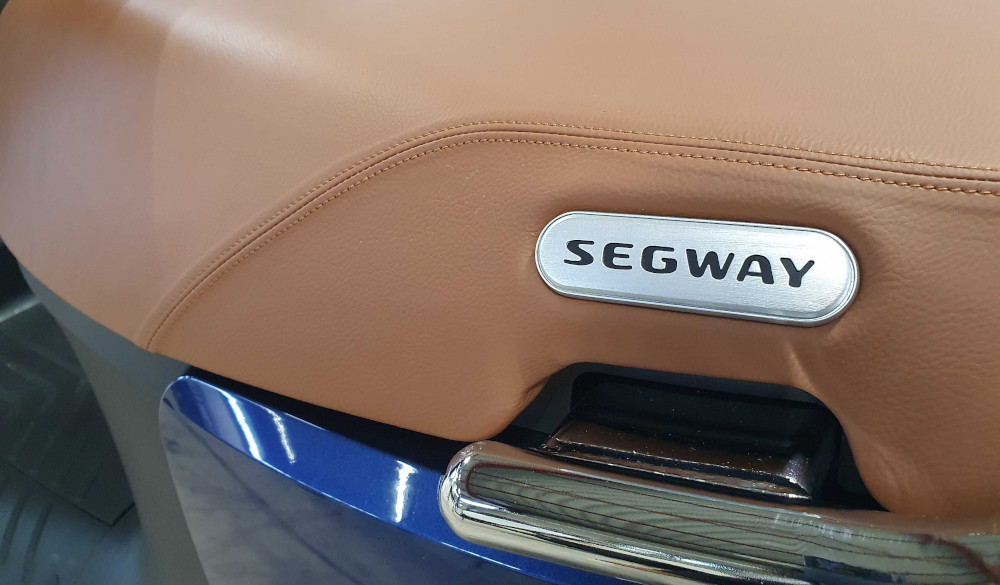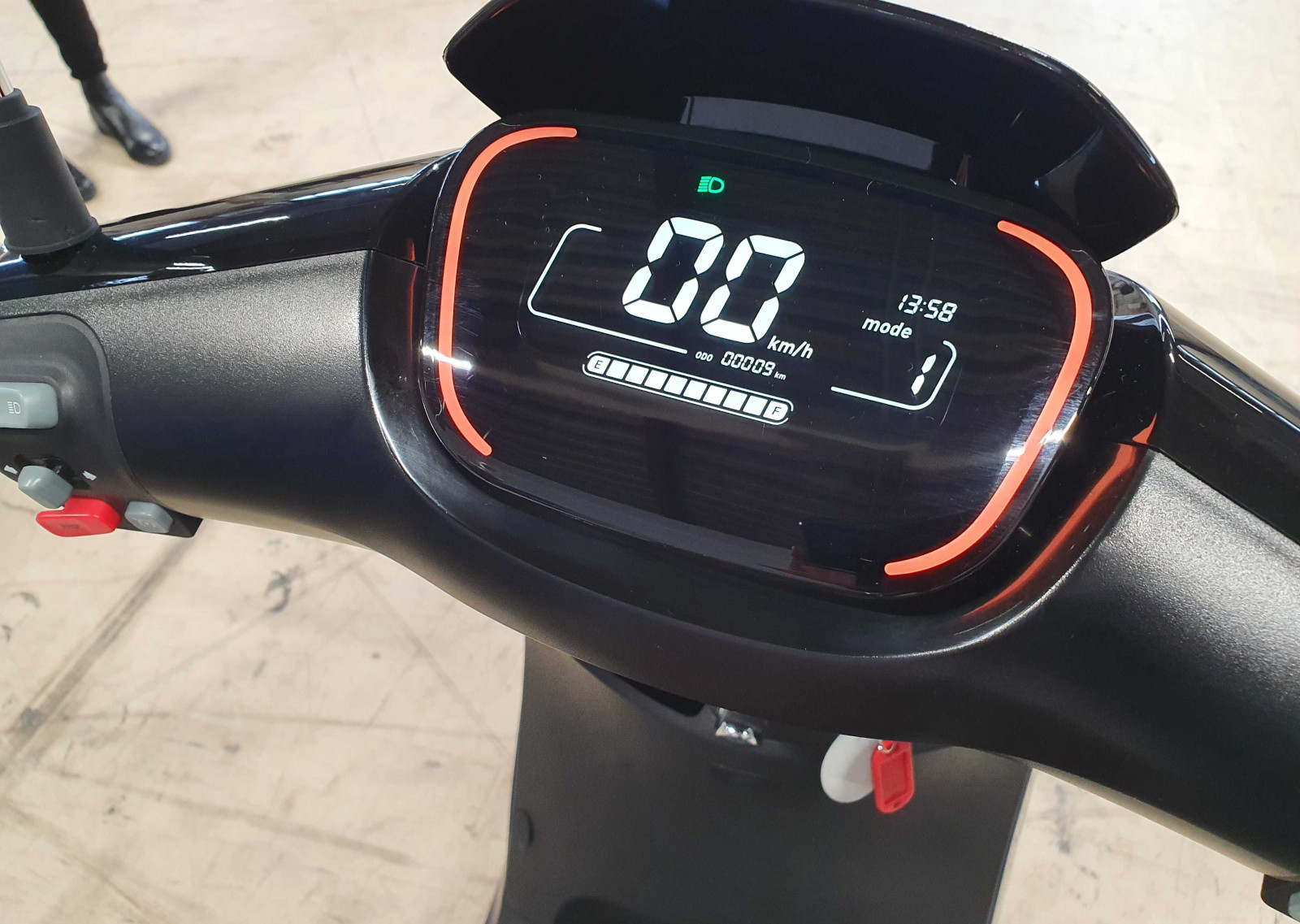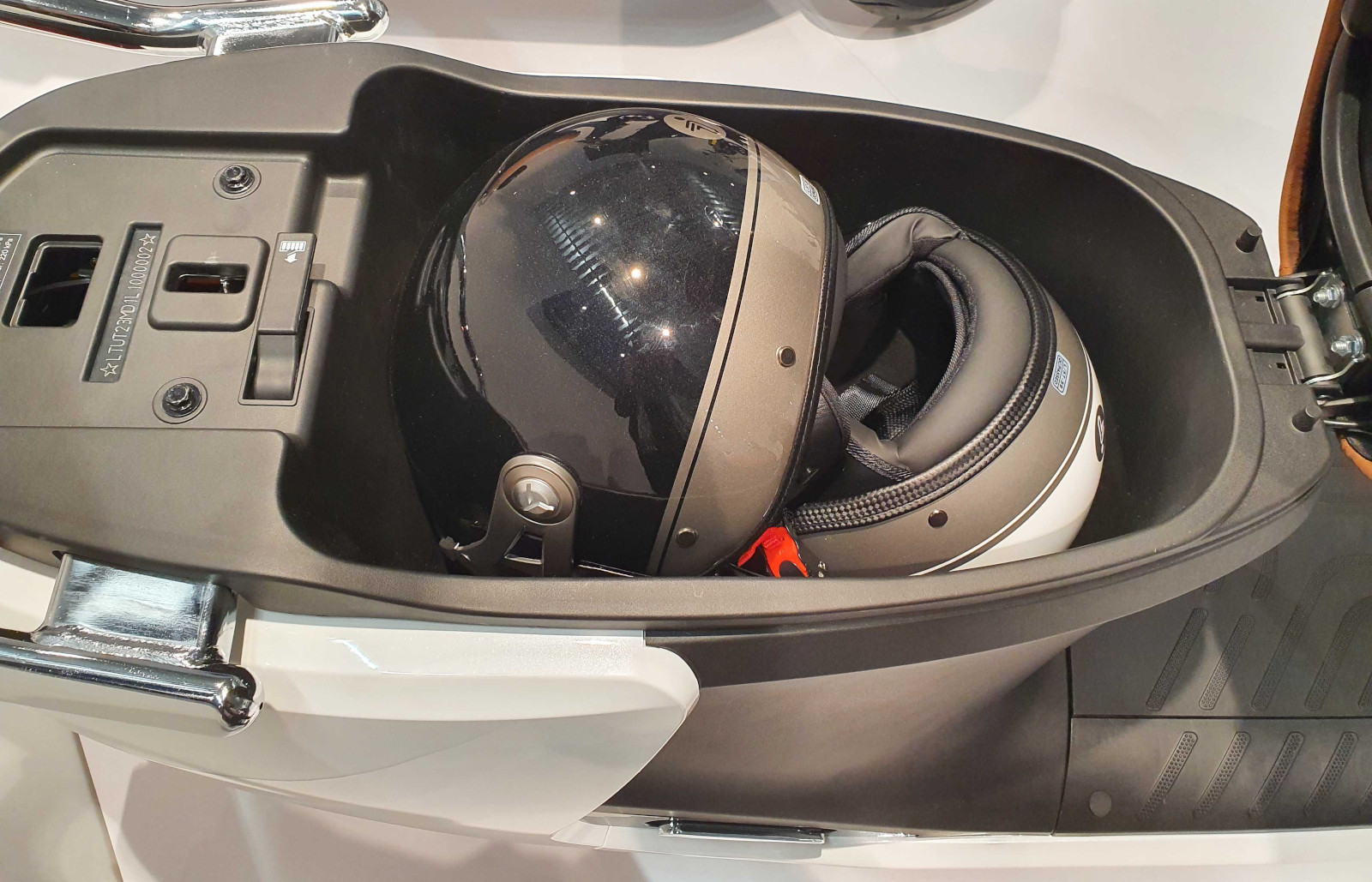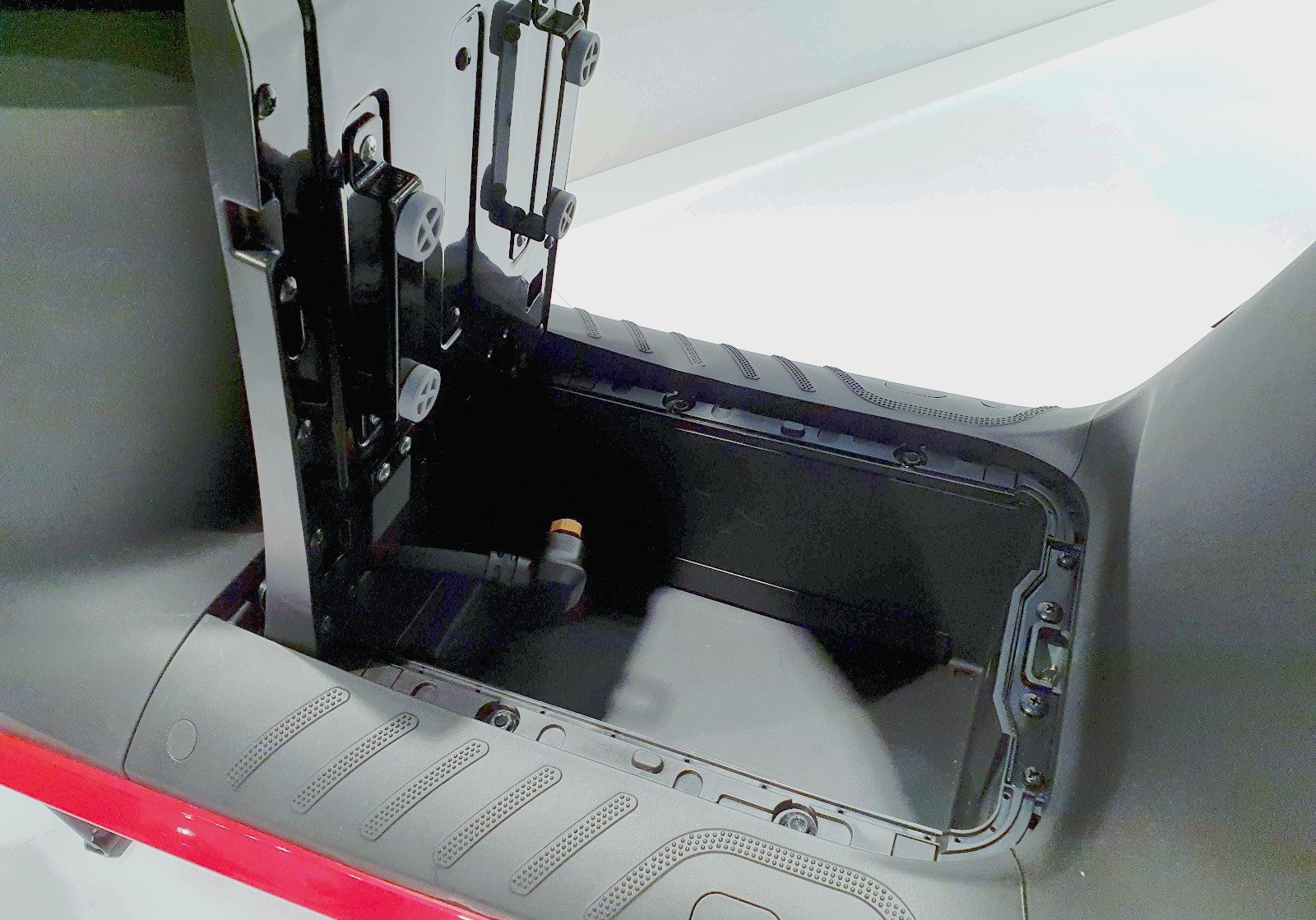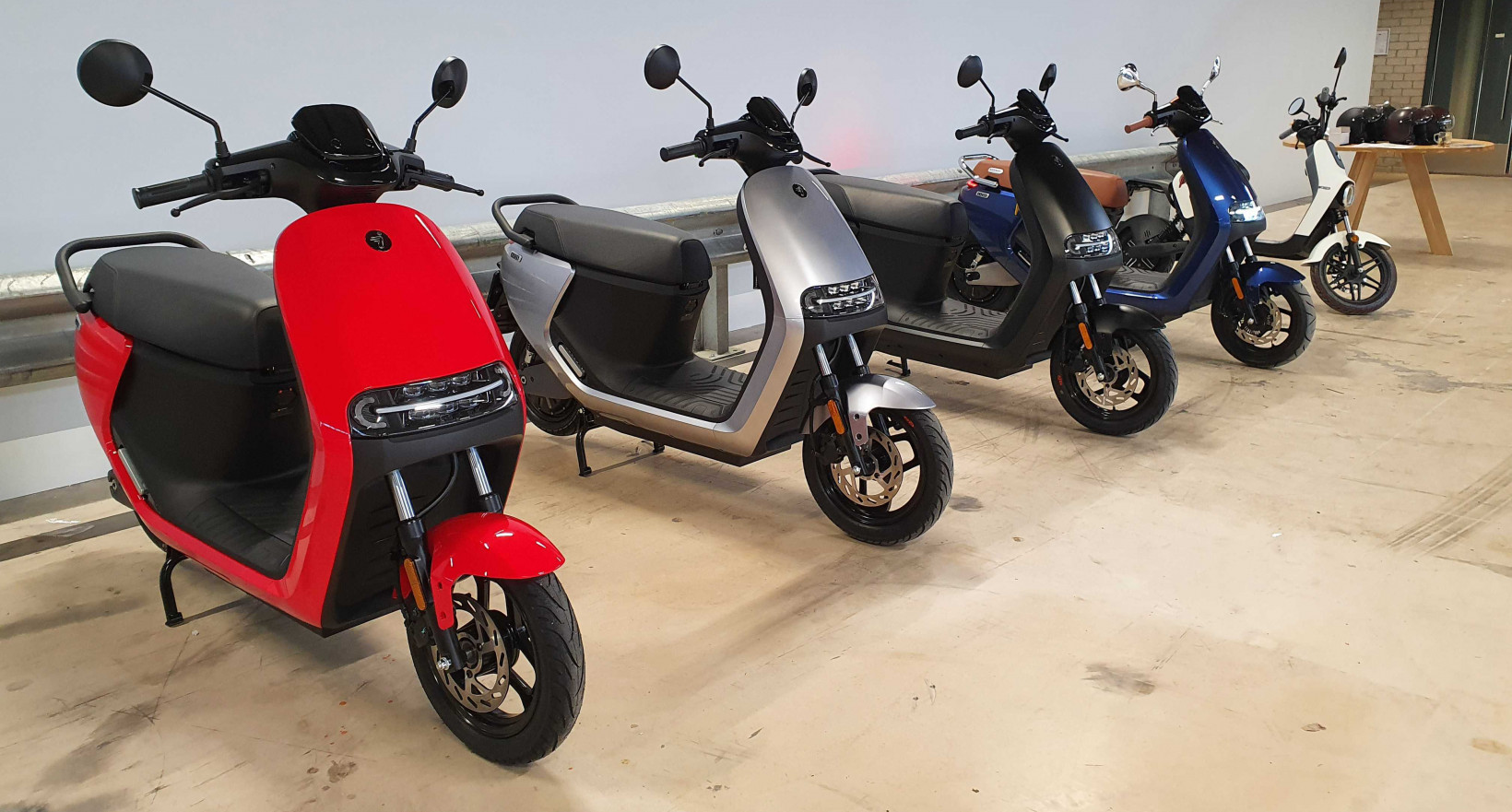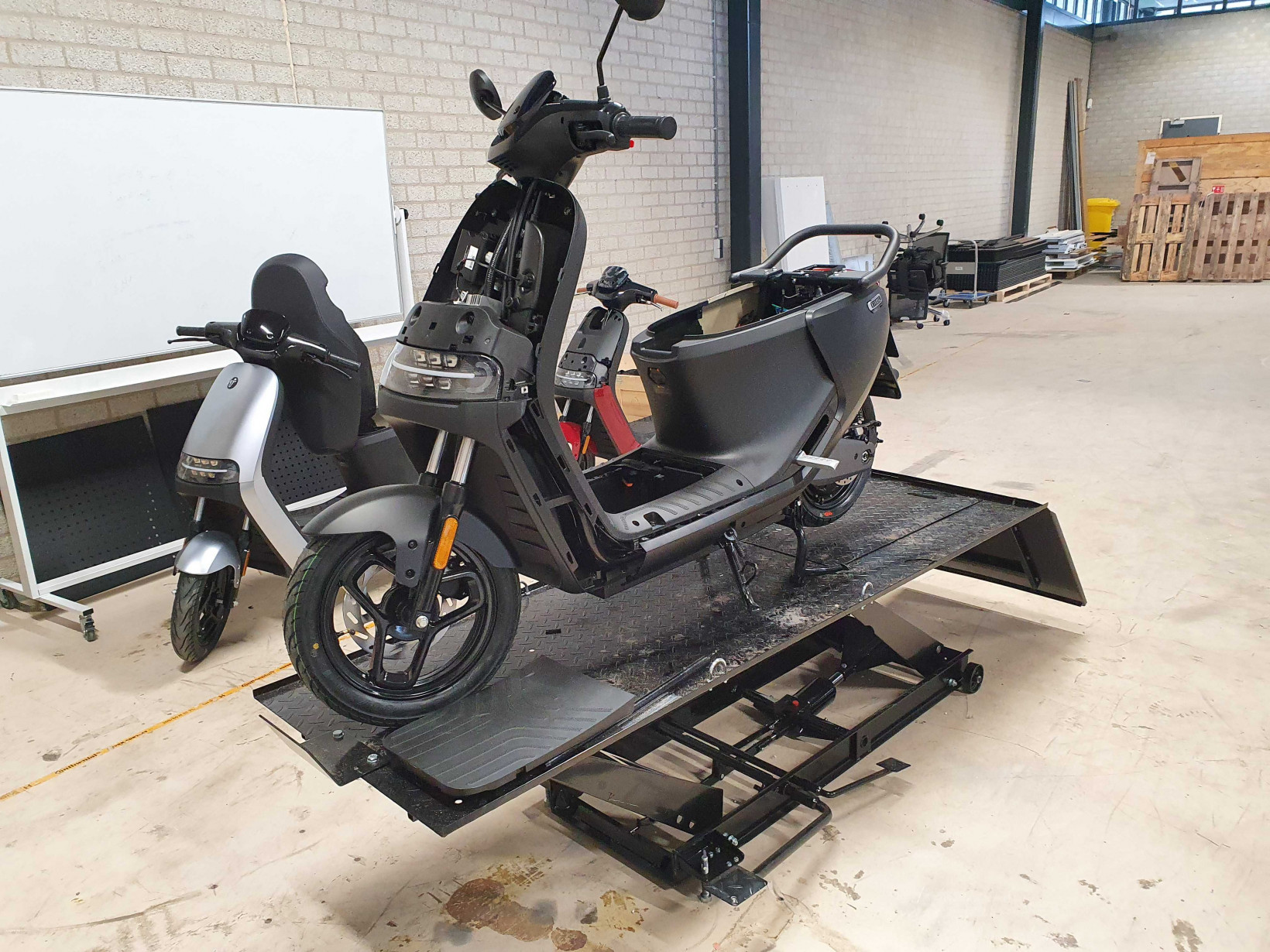I say it’s making a comeback, but in truth, Segway never really went away. Following an acquisition by Chinese robotics firm Ninebot back in 2015, the company is now known as Segway-Ninebot — for the sake of ease, I still call it Segway. It no longer makes its eponymous self-balancing stand-on personal transportation devices. Instead, it is now pivoting to more understandable and accepted forms of mobility, like electric scooters. Last week, in the Netherlands, the short distance mobility company launched a whole new product line up of sit-on electric scooters (or mopeds if you’re British). Honestly, I’ve not been this excited for something with wheels in quite some time.
What’s new?
The three new electric scooters are: the Launch Edition E110SE, the regular E110S, and the top of the line E125SE, are the most conventional product I think Segway has ever made — we’ll get to why that’s a good thing later. There’s a bit of ambiguity over using the words electric scooter to describe what we have here. Usually those words conjure images of the stand-on devices that are being trialed in sharing schemes across Europe. These scooters, however, are the more traditional sit-on style moped, similar to the kind used by pizza delivery people the world over. Richard Van Santen, Segway-Ninebot’s VP of sales and marketing for Europe, showed me around the new products, and told me it makes more sense when we refer to stand-on escooters as kick scooters — which is what Segway calls them, so let’s do that. Thankfully after that mild confusion there’s not too much to digest, and that’s part of what makes the scooters so brilliant. The base model, the E110S, is the most affordable of the range. Driven by an electric motor in the rear wheel, it has 75 km of range, and can complete a full charge in about four hours. The Launch Edition E110SE is the one I’d recommend to most people. It has a slightly larger battery than the standard S model, allowing it to cover up to 95 km on a single charge. The top of the line E125S is the one the style conscious will choose. With the brown leather-style seat, and chrome detailing, it’s the classiest of the bunch. It’s got a subtle hint of the continent about it, and wouldn’t look out of place cruising the streets of Rome on a sunny afternoon. The E125S comes with a dual battery set-up meaning it’s rated for up to 140 km of two-wheeled fun. All three models can be limited to a max speed of either 25 kph or 45 kph, allowing them to be tailored for moped regulations all over the world. All the scooters come with an associated app, which has 4G and GPS tracking for the anti-theft system. The scooter will also send a notification to the app if it falls over. The app also tells the rider all the basic information you’d expect like where it’s parked, how much charge it has, and so on. All pretty normal stuff these days.
How do they ride?
In typical Dutch fashion, it was raining on the day that I got hands-on with Segway’s new scooters, so riding outside was off limits. But I did get to test their acceleration, handling, and basic braking performance indoors. I took it steady, but there’s one thing I can tell you: in the right hands, Segway’s new electric scooters will be an absolute HOOT and a half to ride. [Read: How to use AI to better serve your customers] Thanks to the electric motor, that has a peak output of 3,000 watts, the scooters’ acceleration is intoxicating to the point of being terror inducing. Experienced riders will love this kind of thing. The scooters are spirited, to say the least. It is possible to turn down the max speed of the scooter using a button on the handlebars, but honestly, I’d rather they had a button to turn down the sensitivity of the acceleration! I was rather thankful that the E125S I was testing also had anti-locking brakes, which is pretty rare for a scooter of this nature. And they will no doubt come in useful on wet, and oily city roads.
The best bit
The scooters’ pièce de résistance, however, is a result of its thoughtful and pragmatic design. These aren’t some kind of electric scooter restomod. They have been designed from the ground up to be electric scooters. The scooters’ designers have taken advantage of this, placing the battery in the floor pan rather than under the seat. This lowers the center of gravity, which improves handling, but it also adds a spadeful of practicality by freeing up space under the seat for storage. There is 27 liters of storage in fact, that’s enough for two helmets! What’s more, the scooter’s battery is removable and can be swapped. While the scooter can be plugged in to charge, riders can also take their battery away with them and charge it inside their home, office, garage, or wherever they have power. Fast charges take two hours, and that fills the battery to 80%. Full charges take four hours. The battery weighs about 10 kg, and has a convenient carry handle. It makes it a heck of a lot more useful in cities where charging infrastructure isn’t quite there yet. Even though it’s not offered yet, Van Santen and I did discussed whether Segway will ever offer additional batteries to owners. There are no plans as yet, but the scooter’s design and functionality would allow for owners to take out a depleted battery and immediately replace it with a fully charged one.
A new, more affordable, chapter
Segway has come a long way since its self-balancing scooter days. The company has matured, and its products are far more inline with what consumers need. The original Segway’s ability to stand up on its own, and not let its rider face-plant on the tarmac defied logic. It made it appear more like a magic trick than a safe way of getting around, and that turned a lot of people off. It’s like that trick where a magician saws a person in half: it’s great to watch, but no one wants to participate. It also had a hefty price tag, retailing at up to $8,000. Well, it pleases me to tell you that Segway’s latest, more understandable, range of electric scooters is very affordable, and makes far more sense. They are so affordable in fact, you’ll start to question your life choices. Seriously, these make me wonder why people spend as much as they do on ebikes. For the sit-on electric mopeds, prices start at €2,199 ($2,625) and top out at €3,499 ($4,170). When you consider that some ebikes out there cost more, the scooters seem like great value for money. When Van Santen told me the price, I scratched my head, and had to double-check there wasn’t some kind of catch — I couldn’t find one. Segway-Ninebot is able to keep its prices competitive because it owns its factories, is servicing a huge market in China, and can make 10 million units (across all products, in total) each year. This company has some serious scale, which helps support its competitive prices. For now, Segway is only launching these scooters in the Netherlands. As Van Santen tells me, the company sees the country as the perfect testing ground, before rolling them out in the likes of Germany, Belgium, and then further afield. Scooters are incredibly popular in the Netherlands. Thanks to the way city infrastructure is designed, many commuters still opt for motorized two-wheeled transport over cars. Segway isn’t the only company out there making electric sit-on scooters. In the Netherlands, its main competition will likely come from Niu, another Chinese scooter firm that’s making waves in Europe. Unlike Segway, Niu’s scooters appear more utilitarian, the batteries are under the seat (meaning they’re not quite as practical), and they’re a little pricier. But at a fundamental level, they perform the same function. Segway’s new scooters will be sold at partnering retail outlets, such as specialist scooter and bike shops. Even though Segway’s new rides won’t need as much maintenance as combustion engine variants, it’s important that customers have a dealership location for after-sales support, so this is good to see. Eventually Segway-Ninebot wants to explore direct-to-consumer online selling, but there are quite a few things that need to fall into place for that to happen. Vehicles need to be registered, and a proper handover needs to take place, so it’s not as simple as taking the customers money and sticking the scooter on a pallet with DHL.
So what?
It’s not often that I get properly, properly, excited about some new mobility tech. I say this from an holistic point of view, usually there’s something that always taints my overall impressions of a gadget. It could be a feature lacking, a disagreeable design or color, but usually it’s the price. I’ve ridden a lot of ebikes, and I’ve loved every single one in its own way. But in each case, I look at the price and always feel it’s just too expensive for what it is. But that’s not the case here. Segway-Ninebot’s electric scooters produce zero tailpipe emmissions, are electrifying to ride, near silent, smooth, and are seriously affordable. Oh, and they come in a whole range of colors, so you should find one that catches your eye. It pleases me to say there’s not much to dislike about Segway-Ninebot’s new electric scooters. I’m even more pleased that Segway has grown up, got a little less crazy, and is making products we actually need. Do EVs excite your electrons? Do ebikes get your wheels spinning? Do self-driving cars get you all charged up? Then you need the weekly SHIFT newsletter in your life. Click here to sign up.

